mybatis与数据库访问相关的配置以及设计
mybatis不管如何NB,总是要与数据库进行打交道。通过提问的方式,逐步深入
- 我们常用的MyBatis配置中哪些是与数据库相关?
- 数据源配置:
1 <environment id="development"> 2 <transactionManager type="JDBC"/> 3 <dataSource type="POOLED"> 4 <property name="driver" value="${driver}"/> 5 <property name="url" value="${url}"/> 6 <property name="username" value="${username}"/> 7 <property name="password" value="${password}"/> 8 </dataSource> 9 </environment>
看到这个配置文件,第一个直觉会想到由谁读取配置文件,谁有读取了配置信息?先忽略这个疑问,跳过。直接看下面的问题
1.配置数据源信息后,由谁来创建、管理数据源?
根据JDBC驱动中约束的接口,Connection需要DataSource中获取
如果自己设计,是否直接可以由工厂返回Connection?有什么好处,有什么坏处? //TODO
没看代码前:
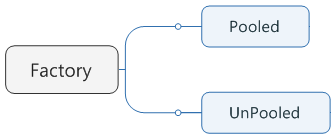
实际Mybatis设计,没有直接返回Connection,而返回了dataSource
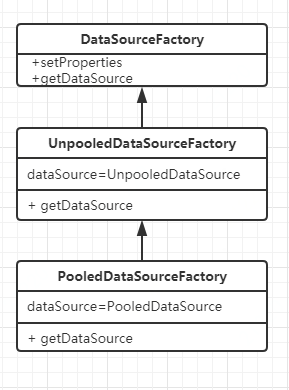
2.对于有连接池的数据源,和无连接池的数据源,我们自己会如何设计?
流程上的区别
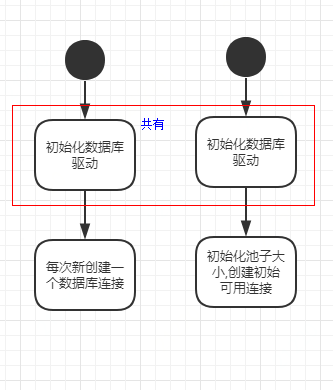
职责上区别
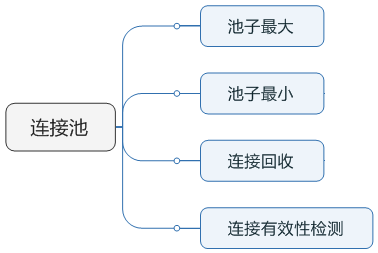
现在解开谜底:看实际Mybatis设计如何?
非池化类:
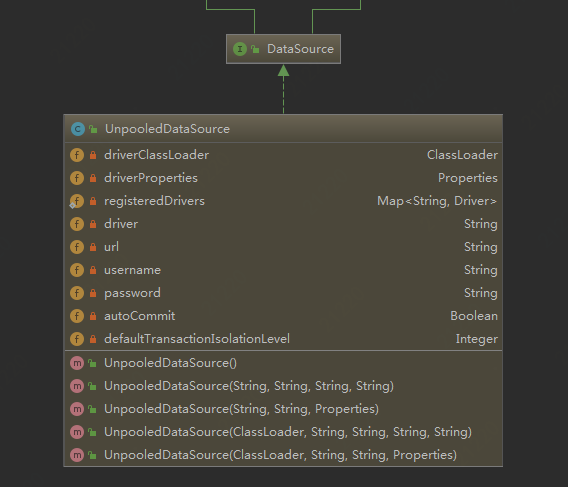
看下最关键的,获得数据库连接,和我们自己写的没啥区别。简单粗暴
private Connection doGetConnection(Properties properties) throws SQLException { initializeDriver(); Connection connection = DriverManager.getConnection(url, properties); configureConnection(connection); return connection; }
池化类:
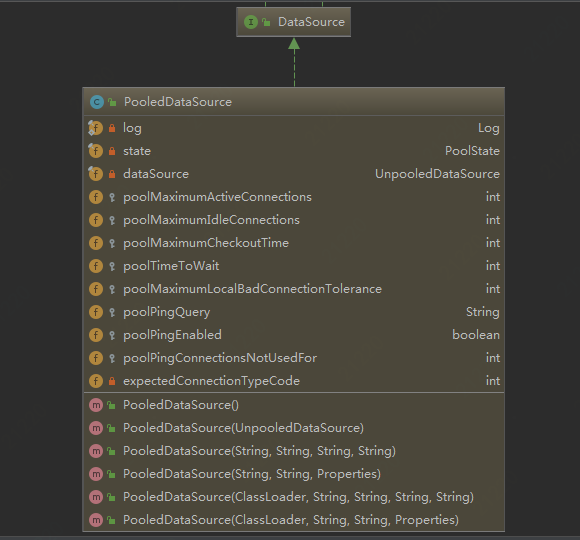
池化工作分配 :
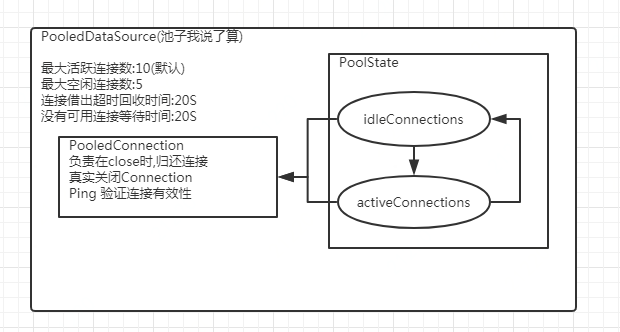
至此,MYBABTIS对于数据源的创建以及管理结束!看下代码,池化获得连接的代码
@Override public Connection getConnection() throws SQLException { return popConnection(dataSource.getUsername(), dataSource.getPassword()).getProxyConnection(); }
while (conn == null) { //够用就行,拿到一个就返回 synchronized (state) { //只有有连接还回来,再走这里 if (!state.idleConnections.isEmpty()) { // Pool has available connection conn = state.idleConnections.remove(0); if (log.isDebugEnabled()) { log.debug("Checked out connection " + conn.getRealHashCode() + " from pool."); } } else { //有两种可能:1种,都在使用中,池子没满,再新建 // Pool does not have available connection if (state.activeConnections.size() < poolMaximumActiveConnections) { // Can create new connection //新建连接 conn = new PooledConnection(dataSource.getConnection(), this); if (log.isDebugEnabled()) { log.debug("Created connection " + conn.getRealHashCode() + "."); } } else { // Cannot create new connection //找一个最老的,用的ArrayList,老的在ArrayList数组的前面 PooledConnection oldestActiveConnection = state.activeConnections.get(0); long longestCheckoutTime = oldestActiveConnection.getCheckoutTime(); //借出超时,不让他做了,直接rollback。。。暴力 if (longestCheckoutTime > poolMaximumCheckoutTime) { // Can claim overdue connection state.claimedOverdueConnectionCount++; state.accumulatedCheckoutTimeOfOverdueConnections += longestCheckoutTime; state.accumulatedCheckoutTime += longestCheckoutTime; state.activeConnections.remove(oldestActiveConnection); if (!oldestActiveConnection.getRealConnection().getAutoCommit()) { try { oldestActiveConnection.getRealConnection().rollback(); } catch (SQLException e) { /* Just log a message for debug and continue to execute the following statement like nothing happend. Wrap the bad connection with a new PooledConnection, this will help to not intterupt current executing thread and give current thread a chance to join the next competion for another valid/good database connection. At the end of this loop, bad {@link @conn} will be set as null. */ log.debug("Bad connection. Could not roll back"); } } //拿回来后,不再放到原有的PooledConnection,新建立一个。从新开始.老的REAL connection还被oldestActiveConnection引用,不会内存溢出? conn = new PooledConnection(oldestActiveConnection.getRealConnection(), this); conn.setCreatedTimestamp(oldestActiveConnection.getCreatedTimestamp()); conn.setLastUsedTimestamp(oldestActiveConnection.getLastUsedTimestamp()); oldestActiveConnection.invalidate(); if (log.isDebugEnabled()) { log.debug("Claimed overdue connection " + conn.getRealHashCode() + "."); } } else { // Must wait //大家都在用着,你只能等着了。 try { if (!countedWait) { state.hadToWaitCount++; countedWait = true; } if (log.isDebugEnabled()) { log.debug("Waiting as long as " + poolTimeToWait + " milliseconds for connection."); } long wt = System.currentTimeMillis(); state.wait(poolTimeToWait); state.accumulatedWaitTime += System.currentTimeMillis() - wt; } catch (InterruptedException e) { break; } } } } if (conn != null) { // ping to server and check the connection is valid or not if (conn.isValid()) { if (!conn.getRealConnection().getAutoCommit()) { conn.getRealConnection().rollback(); } conn.setConnectionTypeCode(assembleConnectionTypeCode(dataSource.getUrl(), username, password)); conn.setCheckoutTimestamp(System.currentTimeMillis()); conn.setLastUsedTimestamp(System.currentTimeMillis()); state.activeConnections.add(conn); state.requestCount++; state.accumulatedRequestTime += System.currentTimeMillis() - t; } else { if (log.isDebugEnabled()) { log.debug("A bad connection (" + conn.getRealHashCode() + ") was returned from the pool, getting another connection."); } state.badConnectionCount++; localBadConnectionCount++; conn = null; //如果累计有这些个链接失效了,则报个异常. if (localBadConnectionCount > (poolMaximumIdleConnections + poolMaximumLocalBadConnectionTolerance)) { if (log.isDebugEnabled()) { log.debug("PooledDataSource: Could not get a good connection to the database."); } throw new SQLException("PooledDataSource: Could not get a good connection to the database."); } } } } }


 浙公网安备 33010602011771号
浙公网安备 33010602011771号